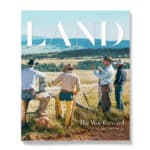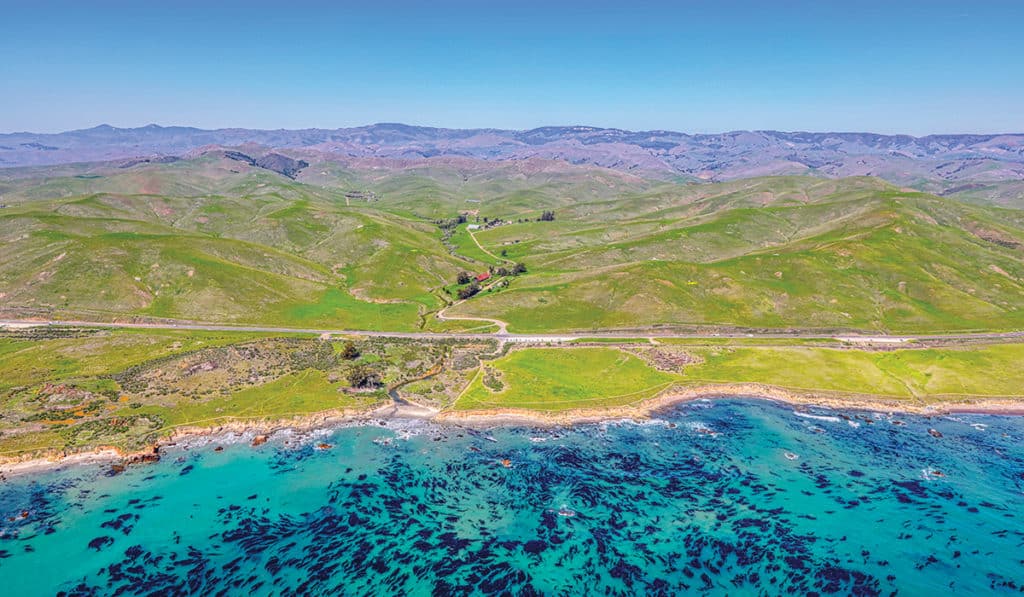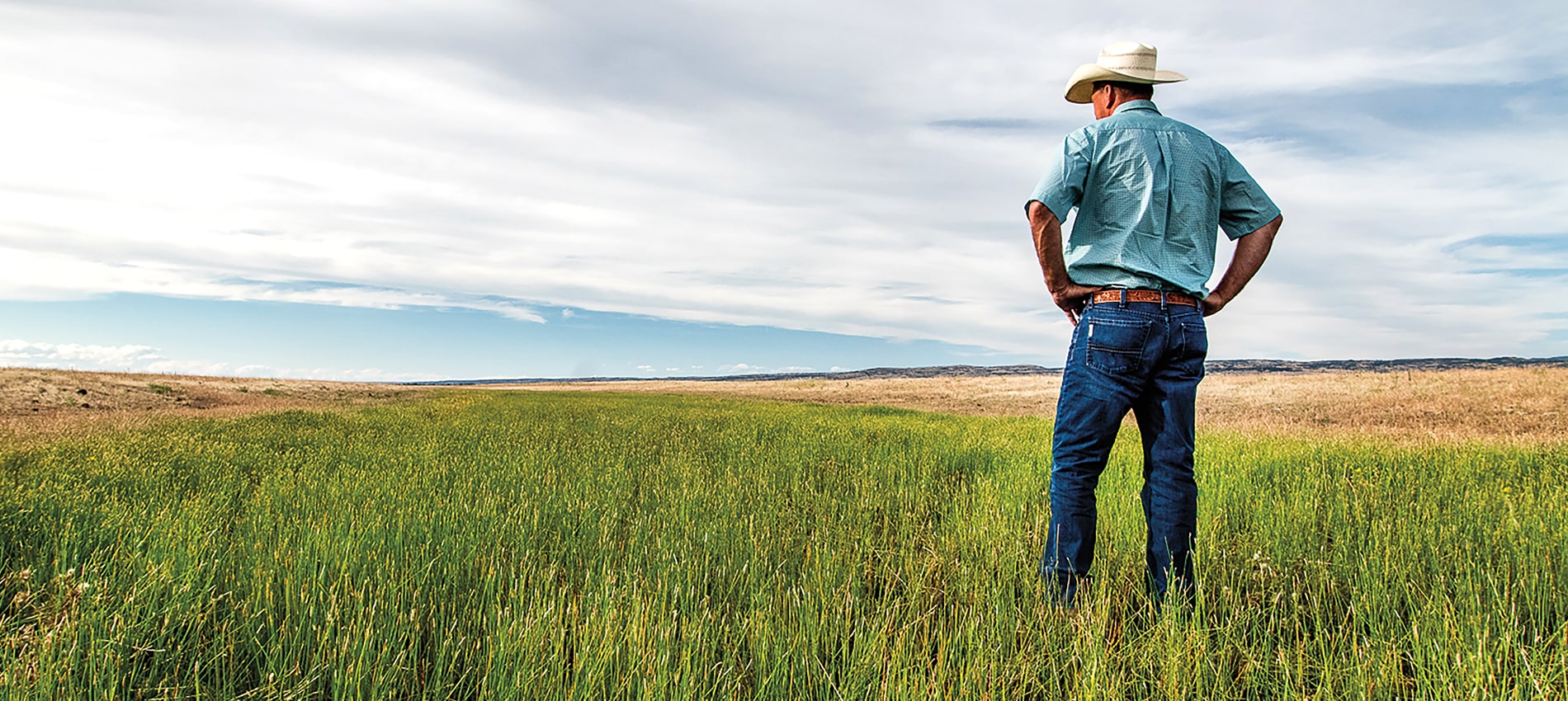
This article is featured in the Fall 2022 issue of LAND magazine. Click here to find out more.
Purchasing a ranch encumbered by a conservation easement requires an extra level of vigilance.
“A conservation easement goes with the land’s title in perpetuity,” said Nita Vail, a broker associate with California-Nevada Outdoor Properties, who is a former rancher and former CEO of the California Rangeland Trust. “Each easement is tailored to that individual property, and they can range from relatively simple to incredibly complex.”
She continued, “The restrictions also fall on a continuum. While some conservation easements provide a good degree of flexibility, others can be very limiting.”
Amy Friend, an agent with California-Nevada Outdoor Properties from a sixth-generation cattle ranching family, added, “Buying a ranch with a conservation easement is not like buying a home with an outdated kitchen, you can’t just remodel a conservation easement. It’s vital that buyers understand what they’re giving up and make their decisions accordingly.”
Conservation Easements
A conservation easement is an agreement between a landowner and a qualified land trust, conservation group, or government agency regarding the future uses of private property. Under a conservation easement, landowners either donate or sell most of their development rights. While conservation easements come in various forms including donated, funded, bargain sale, and mitigation, the agreements are used to protect the land’s natural, cultural, and productive features.
Over time, conservation easements have become increasingly popular. Why? As pressure to sub-divide ranches and farms has increased, the traditional landowner community has accepted the tool as a way to keep property intact.
Conservation easements can also be used as an estate planning tool. Funded conservation easements can provide an infusion of cash for landowning families in situations where some heirs want to continue ranching and others want to “cash out.” In some cases, the current owner, wanting to protect the land, transacts a conservation easement to prevent future heirs from dividing or developing it.
In addition, Congress revised tax laws to provide a significant tax benefit for landowners who donate conservation easements. This is particularly useful for agricultural producers as well as individuals who enjoy ranch ownership but derive their income from other sources. Buyers should note that these tax incentives come to the owners who originally transact the conservation easement, but not to succeeding owners.
Considerations
“Purchasing a property with a conservation easement requires more foresight and planning than purchasing a property without one,” Friend said. “It’s really important to complete due diligence and ascertain if everything in the conservation easement is compatible with your long-term plans for the property.”
The first step is getting a copy of the conservation easement from either the seller or the easement holder.
“Although the conservation easement transfers with the title, it’s not included in a preliminary title report,” Vail said. “The buyers’ team usually has to request it.”
Next, it’s vital to determine what organization holds the easement and become intimately familiar with its mission, its goals, its conservation philosophy and its leadership and Board of Directors. Easement holders can be a government entity or a qualified conservation organization such as the Nature Conservancy or the California Rangeland Trust. Land trusts can also be local or regional organizations, or local governments. (Landowners can check LandTrustAlliance.org to determine if a land trust is accredited.) By law, the easement holder is responsible for ensuring the conservation easement’s provisions are upheld.
“At a minimum, it means someone from the group will be on your ranch at least once a year to monitor its conditions,” said Vail, noting the evaluators compare the ranch’s current conditions to a baseline established at the time the conservation easement was enacted. “Because of the easement, you and the holder are connected for as long as you or your heirs own the land, so it’s important that you’re able to work together.”
The relationship and restrictions in a conservation easement are so crucial that Todd Renfrew, broker/owner of California-Nevada Outdoor Properties, invites potential buyers for properties under conservation easements to meet with representatives of the holding organizations during the due diligence period, she said.
Some land trusts focus on scenery, wetlands, or watersheds, while others concentrate on wildlife or endangered species habit, archaeological sites, or productive, open spaces. They each have different views about their role and relationship with landowners. While some see themselves as silent partners who want to provide landowners maximum flexibility to manage their property and achieve the conservation objectives, others are much more hands-on and controlling.
“Get a feel for the agency or land trust that holds the easement because they all have different priorities,” Friend said. “If you believe in the organization’s mission and want to meet its expectations because its goals align with your personal beliefs and goals, it’s much easier than navigating a relationship with a group that you philosophically oppose.”
And it’s in a landowner’s best interest to determine if the holder has “staying power.” While government agencies generally don’t disappear, small local or regional non-profit organizations with limited financial resources might.
“If the organization holding your easement is dissolved, what would that mean for you and your land?” Friend said. “It’s better to move forward with a group that is well-established and sustainable.”
Once the easement holder is vetted, it’s time to explore the provisions of the conservation easement. Vail and Friend agreed it’s beneficial to have an attorney with experience in this realm review the agreement.
“It’s better to invest in expertise on the front end than contend with surprises on the back end,” Vail said.
Some Examples of Questions to Ask
• What uses are allowed and prohibited?
• Can the easement be amended and what would that entail?
• How often is the property monitored?
• What is measured in that evaluation?
• What is the process for redressing an infraction if one were to occur?
• Does the easement cover the entire property as a unit or are there individual parcels that can be treated differently?
• Does the agreement allow for additional infrastructure (homes, barns, corrals, roads, etc.) or energy production?
• Does the easement affect water rights?
• Is there a mandated grazing plan? Is it flexible enough to address changes due to weather conditions?
• Is hunting and fishing allowed? Can hunting and fishing rights be leased? Can new species be introduced?
• Is the easement flexible enough to allow future generations to develop additional income streams?

In addition to an attorney, Friend also suggested sharing the conservation easement with the appraiser, who should also have experience with these agreements. The appraiser should review the restrictions, so they can be accounted for in the property’s valuation.
“A conservation easement’s impact on value— both current and future—depends on where you are. . .what part of the state. . .what part of the nation. . .as well as how restrictive the easement is,” said Vail, noting that prohibiting development generally diminishes the overall value by approximately 30 percent—40 percent.
When it comes to conservation easements, not all value is measurable. In Friend’s experience, people like her family who love the land and have stewarded it for generations, get great “life satisfaction” from keeping the land a naturally productive home for livestock and wildlife.
“By conserving the land they’ve cared about and cared for with an easement, they’re keeping their legacy of stewardship intact forever—and the purchasers get to carry that legacy forward as part of their own,” Vail said.
